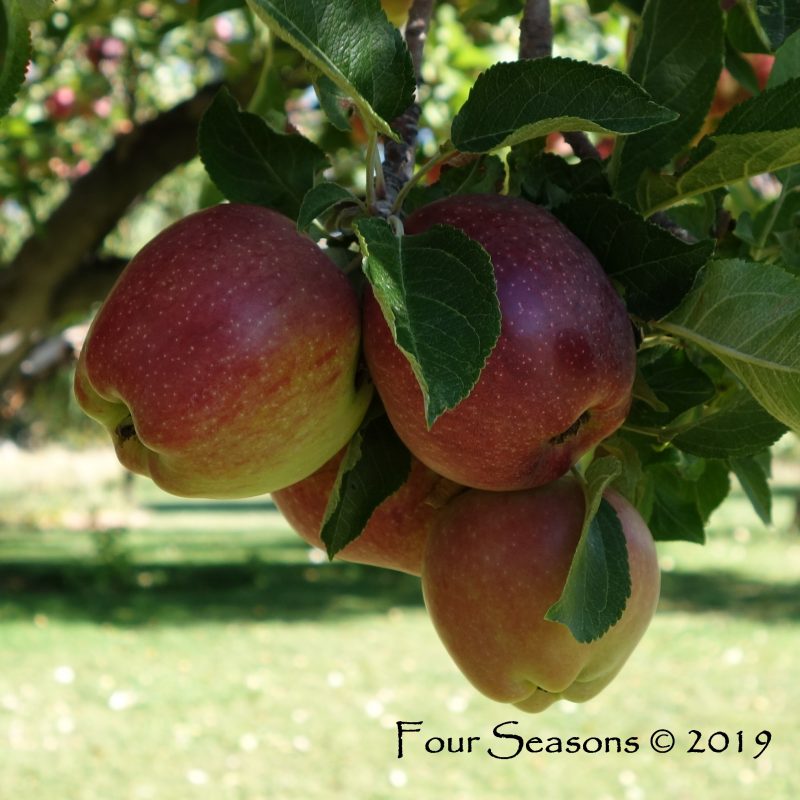You can slice them, you can dice them, you can juice them, you can sauce them, you can use them in pies, fritters, dumplings and pastry. Yes- it’s apple season!
The return of apple season each year always brings back fond memories for me of growing up in the northeastern part of the country where apples are a big deal. It simply wouldn’t be October without fresh apples and cider. Fortunately, apples are one of the easier fruits to grow in Southwestern Colorado. Unlike the stone fruits which can be fussy, apple trees are fairly hardy, cold, and drought tolerant. If you wish to plant your own home apple orchard, here are some guidelines.
Chose a location with full sun and well drained soil. Be aware however, that apples attract deer and sometimes bears. Both of these animals are as fond of this fruit as we humans are, so you might want to consider a fenced area, or at least one that is away from your house or other things that might be damaged by these critters.
Select a variety that is right for your area or growing zone. One consideration is what to you wish to use your apples for- sauce, eating, cooking, cider, pies, jam or jelly? Do you want a standard tree which may grow to be 20-30 feet tall, or would a semi-dwarf that will top out at 12-15 feet be suitable for you? Your local garden center or nursery will have the information and advice about what is right for your needs and in your area.
If you like red apples, some of the varieties that do best here are Red Delicious, McIntosh, Gala, Fuji, and Honeycrisp. If sauce or pies or storage for use at a later date is what you’re after, try Winecrisp.
Yellow apples are generally sweeter and, in general, make great eating apples. Try Golden or Yellow Delicious, or Honeygold. If you like green apples, then Granny Smith is the one for you. An old variety, this apple is a classic with hard, juicy flesh and an excellent tart flavor. It is a great apple for eating if you like tart apples, but is most often used in cooking.
Apples are only somewhat self-fertile so they will do better if you plant another variety close by that serves as a pollinator. Cross pollination is possible only when varieties bloom at approximately the same time so early bloomers should be planted with other early or midseason bloomers and late bloomers with other late or midseason bloomers. Trees should be within 100 feet of one another as the wind will not carry the pollen from one tree to another. This makes bees an indispensable addition to your orchard and for this reason you may wish to locate your backyard orchard away from children’s play areas.
Fertilize them two to three times a year, generally about a month before they leaf out in the spring, again in early June, and once more in late July. Spray after the flowers are finished to prevent the coddling moths. These moths that lay the eggs which hatch into worms that will eventually get into and eat the apples, so this is very important. Spray twice during the summer for this but don’t spray before the flowers drop off as this will kill the bees which are necessary for pollination. Then water consistently and wait for the harvest!
The ground has remained warm this fall which makes it a great time to plant apple trees because they’ll have a chance to root in and become established before cold weather arrives. If you’re enjoying the fall apple harvest, either from the grocery store or the local farmer’s market, consider planting some apple trees. Next year you could be harvesting from your own backyard orchard!

